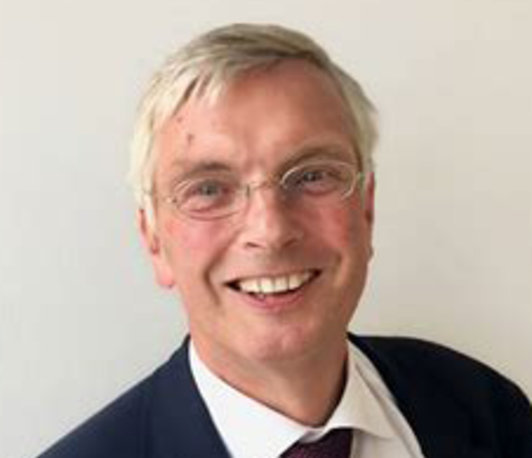How music making changes brain function and stucture: Music making as a model for functional and dysfunctional neuroplasticity
Institutskolloquium
- Datum: 13.01.2023
- Uhrzeit: 10:30 - 12:00
- Vortragender: Prof. Eckart Altenmüller
- Eckart Altenmüller (MD, MA) is full Professor and Director of the Institute of Music Physiology and Musicians Medicine and the University of Music and Drama, Hanover, Germany.
- Ort: Zoom Meeting Room 1
- Raum: Zoom Meeting
- Gastgeber: Dmitry Moseev
- Kontakt: dmitry.moseev@ipp.mpg.de

Eckart Altenmüller (MD, MA) is full Professor and Director of the Institute of Music Physiology and Musicians Medicine and the University of Music and Drama, Hanover, Germany.
After graduating in Medicine and Music he held a postdoctoral position in the department of Clinical Neurophysiology in Freiburg where he carried out research into brain activation during auditory processing of music and learning of fine motor skills. He received his clinical training in Neurology at the Department of Neurology at the University of Tübingen (Head of the Department Prof. Dr. J. Dichgans). Since 1994 he is a chair and director of the Institute of Music Physiology and Musicians’ Medicine. He continues research into movement disorders in musicians and into motor and sensory learning as well as in the effects of music on emotions. Furthermore he leads an international research group investigating the effects of making music on brain plasticity in seniors.
Dr. Altenmüller is also a performing artist. While studying music with Christian Lardé in Paris and with Aurèle Nicolet, André Jaunet and William Bennett in Freiburg, he was a member of the Ensemble for New Music in Freiburg. After the concert exam in 1985, he continued concert activity as a chamber musician, in lecture concerts and as a soloist with orchestras, e.g. at the Feldkircher Days for New Music (Jolivet 2nd flute concert)w ith the Ensemble Elipsis in Italy (including flute concerts by Mercadante, Salieri, CPE Bach). His acitivites are widespread and include regular concerts in Germany, Poland, Italy, USA, and Australia.
During the last tenty years he received 20 grants from the German Research Society (DFG). He has published 259 peer reviewed original articles and 215 articles in books. Furthermore more he has edited 6 books and written a pioneering book on “Music and the Brain” in German.
Major awards are: Fellow of the Deutsche Studienstiftung, Young Scientists Award of the German Physiological Society 1984, Kornmüller-Award of the German Society for Clinical Electrophysiology for EEG-Research 1992, Richard Lederman Lecture, Aspen 1999, Member of the Faculty of the European Forum Alpbach 1999, Otto Creutzfeldt Lecture of the German Neuroscience Society 2003, Member of the Göttingen Academy of Sciences 2005, President of the German Society for Music Physiology and Musician’s Medicine from 2005-2011, Vicepresident from 2011-2017, Vice-President of the University of Music, Drama and Media from 2015 until 2021, Science Award of the Country of Lower Saxony 2013, Koetser-Award for Brain Sciences 2020, Neuroscience of Music Award 2021.
Performing music at a professional level is probably the most complex of
human accomplishments. Music, as a sensory stimulus, is highly complex
and structured along several dimensions. Moreover, making music requires
the integration of multimodal sensory and motor information and precise
monitoring of the performance via auditory feedback. In the context of
classical music, musicians are forced to reproduce highly controlled
movements almost perfectly with a high reliability. These specialized
sensory-motor skills require extensive training periods over many years,
starting in early infancy and passing through stages of increasing
physical and strategic complexities. The superior skills of musicians
are mirrored in plastic adaptations of the brain on different time. At
one extreme, years of musical experience, especially in those musicians
who begin training early in life, might lead to an increase in gray and
white matter volume in several brain regions, including sensory-motor
and auditory areas, the cerebellum and the anterior portion of the
corpus callosum. These anatomical alterations appear to be confined to a
critical period. The fact that in several of the studies a correlation
was found between the extent of the anatomical differences and the age
at which the musical training commenced strongly argues against the
possibility that these differences are pre-existing and the cause for
rather than the result of practicing music. There is a dark side to the
increasing specialisation and prolonged training of modern musicians,
namely loss of control and degradation of skilled hand movements, a
disorder referred to as musicians’ cramp or focal dystonia. The first
historical record, from 1830, appears in the diaries of the ambitious
pianist and composer Robert Schumann. As was probably the case for
Schumann, prolonged practice and pain syndromes due to overuse can
precipitate dystonia, which is developed by about 1% of professional
musicians and usually ends their career. Neuroimaging studies point to
dysfunctional (or maladaptive) neuroplasticity as its cause. In my
seminar I will present the mechanisms of music induced plasticity and I
will go into prevention programs, designed to support wellbeing of
musicians, be it amateurs or professionals.